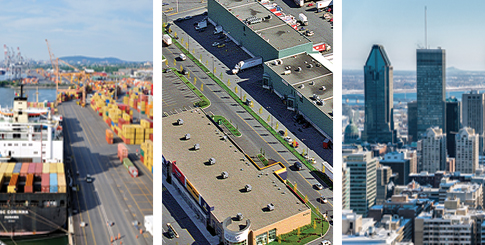The locally grown movement is certainly not a new development, but demand for Quebec-harvested fruits and vegetables soared over the summer and early fall months, and the majority of Montreal-based suppliers prefer local produce whenever they can get it. “Consumers want local products,” confirms Plante, “and retailers respond well to demand with a nice supply of local products.”
Chief among these local favorites are blueberries—native to Canada—and highly popular throughout the provin-ces. Annually, fresh blueberry sales generate a quarter of the country’s farm-gate fruit revenue, valued at CAD$260 million in 2016. They are also the True North’s top fruit export by both value and tonnage.
Quebec produces millions of pounds of blueberries each year. The Saguenay-Lac-St.-Jean region is home to the largest wild blueberry grower in Canada, which contributes nearly 80 million pounds of blueberries to the country’s total supply. In turn, the majority of shipments go to buyers in the United States; the rest of the top export markets are Switzerland, Germany, Japan, and Belgium, though blueberries also go to 24 other countries around the world.
Climbing Production
Higher demand has spurred more cultivation for several fruits and vegetables in Quebec, which is second only to Ontario in production of most crops and yields. The province has seen cultivated production areas devoted to fruit climb over the last five years from just over 39,400 hectares in 2012 to 41,600 in 2016, accounting for 32 percent of Canada’s total—more than any other province, as reported by Agriculture and Agri-Food Canada. Two fruits, both berries—blueberries and cranberries—saw production acreage climb in 2016.
When it comes to planted vegetables, Quebec ranks second at 35 percent to Ontario’s 49 percent, and was valued just shy of CAD$428.5 million. In 2016, there were nearly 36,200 hectares devoted to vegetables in Quebec, up from 2012’s 35,400 but down slightly from 2015’s 36,256.
The ever-popular protected agriculture trend is also rising in Quebec; the prov-ince has nearly 250 greenhouses, following the lead of Ontario, North America’s leading greenhouse grower.
In addition to usual tomatoes, peppers, cucumbers, and lettuce, greenhouse growers are also trying their hand at eggplant, Chinese vegetables, herbs, and green beans.
Ethnic and Specialty Items
Like its sibling provinces, Quebec is home to an incredibly diverse population. Statistics Canada predicts that by 2036 half of all Canadians will be immigrants or the children of immigrants, and more than 25 percent of the country’s population will speak a language other than English or French. Nearly 15 percent of these future immigrants are expected to settle in Montreal.



